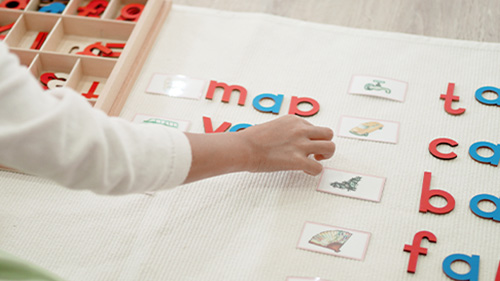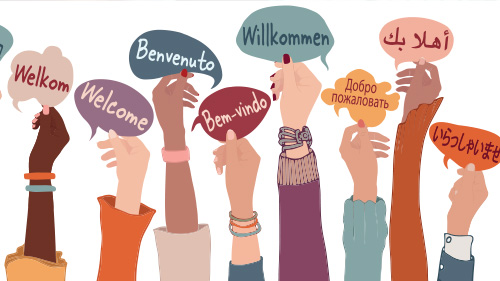Inspiring Success Stories of Emergent Bilingual Learners in Middle School
When I think about the success stories of my middle school emergent bilingual learners, I can’t help but smile. What about you? Sure, there were...
AP & Honors Mathematics
Explore Wiley titles to support both AP and Honors mathematics instruction.
Literacy Skills & Intensive Reading
Connections: Reading – Grades 6–12
Empower student success with a proven intensive reading program that develops strong reading skills in striving readers.
Drama, Speech & Debate
Basic Drama Projects 10th Edition
Build students’ confidence and competence with comprehensive, project-based theatre instruction.
Literature
Connections: Literature
Support learners as they study dynamic, relevant texts and bring the richness of diverse voices to students through literature.
Literature & Thought
Develop critical thinking, reading, and writing across literacy themes, genres, historical eras, and current events.
Language Arts
Vocabu-Lit® – Grades 6–12
Help students build word power using high-quality contemporary and classic literature, nonfiction, essays, and more.
Connections: Writing & Language
Help students develop grammar, usage, mechanics, vocabulary, spelling, and writing and editing skills.
Reading/English Language Arts
Measuring Up to the English Language Arts Standards
Incorporate standards-driven teaching strategies to complement your ELA curriculum.
English Language Learners
Measuring Up for English Language Learners
Incorporate research-based best practices for ELLs with an approach that includes a focus on language acquisition strategies.
Mathematics
Measuring Up to the Mathematics Standards
Incorporate standards-driven teaching strategies to complement your mathematics curriculum.
Foundations
Measuring Up Foundations
Help students master foundational math skills that are critical for students to find academic success.
Science
Measuring Up to the Next Generation Science Standards
Give students comprehensive NGSS coverage while targeting instruction and providing rigorous standards practice.
Assessment
Measuring Up Live
Deliver innovative assessment and practice technology designed to offer data-driven instructional support.
For a better website experience, please confirm you are in:
3 min read
Dr. Almitra Berry Jan 17, 2024 1:41:00 PM

Do you ever have one of those days where you ponder, “What on Earth am I doing, and am I doing it right???” I did. Often. And they were often accompanied by tears and the heavy consumption of caffeinated beverages to get me through the day. Teaching English to middle school learners who are also emergent bilingual learners presents unique challenges if one of your goals is to ensure success, equitable outcomes or to leave no learning unfinished.
Over the years, I’ve found these challenges fall into four big buckets: classroom culture, instructional methods, curriculum content, and assessment. Let’s dig into each of these buckets and identify some of the most common challenges - it’s not you, it just is - and some strategies to address them.
In the first bucket, classroom culture, three challenges deserve our attention: cultural and linguistic diversity, socio-emotional states, and academic confidence levels. As educators, we must be prepared to create an inclusive learning environment that responds to learners from diverse cultural backgrounds in a manner that respects, affirms, and validates not only who those learners are but all that they bring to the classroom. But how?
My two big bucket strategy recommendations here are to
I’ll address this in detail in the March blog, so stay tuned for more on socio-emotional support and inspiring progress via inclusive classroom culture.
There’s a lot of overlap between the buckets that contain instructional methods and curriculum content. So, let’s consider them a super bucket. Digging into this, we find significant challenges often categorized as building BICS (basic interpersonal communication skills) and developing CALP (cognitive academic language proficiency).
You may have learners across various language proficiency levels in their primary language and English. You may have learners of varying levels of literacy development in their primary language, influencing their development in English literacy. Yet, we expect them to read, write, and respond using academic language like that in their grade-level texts. I know; the struggle is real!
Evidence-validated strategies for tackling this bucket would have you:
Those four are robust instructional practices, so much so that they took entire chapters in my upcoming book. I can’t cover all that in this post, so I’ll devote the May blog to those vocabulary and writing strategies.
Our last bucket contains two items regarding assessment that warrant consideration: placement issues and navigating standardized assessments. Proper formative and summative assessment is crucial but often challenging. Most general education and content area assessments are not developed with emergent bilingual learners in mind.
Assessments contain significant bias when developed without considering a learners’ culture and lived experience. Too often, assessment outcomes reflect the learner’s English proficiency rather than their actual knowledge or intelligence. Imagine having to take tests in a language we were learning! So, what’s a middle school educator to do?
I suggest beginning with these two strategies that you can implement in your classroom:
Dr. Almitra L. Berry is an educational consultant, author, and podcaster. She contributed to the review of emergent bilingual supports in Connections: English Language Arts. Dr. Berry extensively covers emergent bilingual learners in her book Effecting Change for Culturally and Linguistically Diverse Learners and several episodes of the Educational Equity Emancipation podcast.

When I think about the success stories of my middle school emergent bilingual learners, I can’t help but smile. What about you? Sure, there were...

As middle school educators, we know the moment when a learner comes alive in class. Maybe they're debating a character's motivation or crafting a...
.jpg)
Congratulations! You’re well into the first semester now. You’re developing new and solid relationships with your learners and creating a classroom...

In my last post, I shared the success stories of two of my multilingual learners. I told you I used strategies, but I didn’t share which ones.

It’s that time! The school year is beginning and you’re ready to welcome up to 180 new learners into your classroom. Whether you’re in your first...

The summer break is winding down, and soon you'll be setting up your classroom for another year of learning adventures. Whether you're a first-year...

In American K-12 public schools, English language learners (ELLs) make up over 10% of students. 10% may not sound like much, but that’s over 5...

What happens when we stop seeing language diversity as a barrier and start embracing it as our greatest classroom asset?

Walk into a middle school classroom during a lively literature circle and you’ll hear questions, laughter, debate, and—most important—learners...

This interactive webinar focuses on scaffolded approaches to the finishing touches necessary for higher-level success on the LEQ and DBQ portions of...

This will be my 12th year teaching high school ELA, and you could say I’ve learned a few things that I wished I knew going into year one. One thing...

Join Brandon Abdon as he hosts teacher, author, consultant, and digital exam coach Melissa Alter Smith to discuss preparing for—and training...
